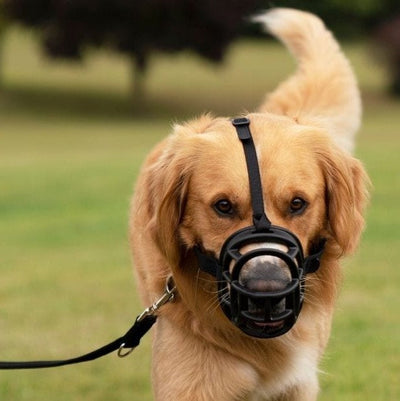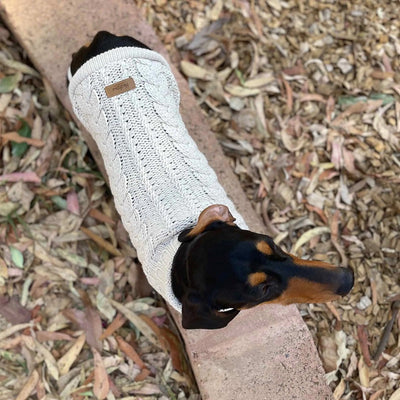 Discover the secrets of creating a stunning aquascape with the best carpeting plants available for your aquarium. Transform your tank into an underwater paradise that will leave your guests in awe. From lush green carpets to vibrant splashes of colour, these plants are the key to achieving the perfect balance and harmony in your aquatic world.
Discover the secrets of creating a stunning aquascape with the best carpeting plants available for your aquarium. Transform your tank into an underwater paradise that will leave your guests in awe. From lush green carpets to vibrant splashes of colour, these plants are the key to achieving the perfect balance and harmony in your aquatic world.
Whether you are a beginner or an experienced aquarium enthusiast, choosing the right carpeting plants is essential. These plants not only provide a gorgeous backdrop, but they also serve a functional purpose by helping to maintain water quality and oxygenate your tank.
In this article, we will explore the top carpeting aquarium plants that will elevate your aquascape to the next level. We will dive into their unique characteristics, care requirements, and growth patterns, so you can make an informed decision for your tank.
Join us on this aquatic journey and unlock the beauty of carpeting plants in your aquarium. Get ready to take your aquascape to new heights and impress everyone who lays eyes on your underwater masterpiece.
The Importance of Carpeting Plants in Aquascaping
 Aquascaping is the art of creating visually appealing underwater landscapes in aquariums. It involves using a variety of plants, rocks, and other decorative elements to mimic natural habitats and create a visually stunning display. Carpeting plants play a crucial role in aquascaping as they provide a lush and vibrant carpet-like covering at the bottom of the tank.
Aquascaping is the art of creating visually appealing underwater landscapes in aquariums. It involves using a variety of plants, rocks, and other decorative elements to mimic natural habitats and create a visually stunning display. Carpeting plants play a crucial role in aquascaping as they provide a lush and vibrant carpet-like covering at the bottom of the tank.
Carpeting plants not only enhance the aesthetic appeal of your aquarium but also serve several functional purposes. They help to maintain water quality by absorbing excess nutrients and providing oxygen through photosynthesis. Additionally, carpeting plants provide shelter and hiding places for fish and other aquatic creatures, creating a more natural and stress-free environment.
Without carpeting plants, an aquascape may appear barren and lacking depth. These plants add a sense of realism and create a captivating foreground that draws attention and creates a sense of scale. Whether you are aiming for a lush green carpet or a colourful mosaic, carpeting plants are essential for achieving the perfect aquascape.
Benefits of Using Carpeting Plants in Your Aquarium
 Using carpeting plants in your aquarium offers a wide range of benefits.
Using carpeting plants in your aquarium offers a wide range of benefits.
Firstly, carpeting plants create a natural habitat for fish and invertebrates. The dense carpet acts as a hiding place and offers protection for smaller species, reducing stress and promoting overall well-being.
In terms of aesthetics, carpeting plants provide a visually appealing foreground that adds depth and dimension to your aquascape. They create a smooth transition between the hardscape elements and the midground or background plants, enhancing the overall composition.
Carpeting plants also play a vital role in maintaining water quality. Through photosynthesis, they absorb excess nutrients such as nitrates and phosphates, which helps prevent algae growth and keeps the water clean and clear.
Furthermore, carpeting plants oxygenate the water by releasing oxygen during photosynthesis. This is especially beneficial for fish and other aquatic organisms that rely on oxygen-rich water to thrive.
Overall, the use of carpeting plants in your aquarium provides both functional and aesthetic benefits, making them a crucial element in any aquascape.
Types of Carpeting Plants for Aquascaping
When it comes to carpeting plants, there are several popular options to choose from. Each type has its own unique characteristics, growth patterns, and care requirements. Let's explore some of the most popular carpeting plants for aquascaping:
- Dwarf Baby Tears: Dwarf Baby Tears also known as Cuba in Australia, is a popular choice for creating a lush green carpet in your aquarium. It has small round leaves that densely cover the substrate, creating a carpet-like effect. This plant requires high levels of light and CO2 supplementation to thrive.
-
Eleocharis Acicularis Mini: Dwarf Hairgrass is another commonly used carpeting plant that forms a beautiful green carpet in your tank. It has thin, grass-like leaves that create a delicate and natural look. This plant is relatively easy to care for and can tolerate a wide range of lighting conditions.
- Micranthemum tweediei: Sometimes known as Monte Carlo is a versatile carpeting plant that can adapt to various lighting conditions. It has small, round leaves that form a dense carpet, providing a vibrant and lush foreground in your aquascape. Monte Carlo is relatively easy to care for and is suitable for beginners.
These are just a few examples of carpeting plants that you can use in your aquarium. Each plant offers its own unique characteristics and can be combined with other carpeting plants or background plants to create a truly stunning aquascape. Consider factors such as lighting, CO2 supplementation, and growth rate when choosing the right carpeting plants for your tank.
Factors to Consider When Choosing Carpeting Plants
When selecting carpeting plants for your aquarium, several factors should be taken into consideration to ensure their success and compatibility with your tank's conditions. Here are some key factors to consider:
- Lighting: Different carpeting plants have varying light requirements. Some plants, such as Dwarf Baby Tears, require high levels of light to thrive, while others, like Java Moss, can tolerate lower light levels. Assess your tank's lighting conditions and choose plants that are suitable for your setup.
- CO2 Supplementation: Carpeting plants often benefit from additional CO2 supplementation, especially in high-tech setups. CO2 supplementation promotes healthy growth and helps prevent algae overgrowth. Consider investing in a CO2 system if you plan to have demanding carpeting plants in your aquascape.
- Substrate: The type of substrate you choose can impact the growth and success of your carpeting plants. Some plants, like Dwarf Hairgrass, require a nutrient-rich substrate to thrive, while others, like Java Moss, can attach to various materials. Research the substrate requirements of your chosen plants and ensure they are compatible with your tank setup.
- Water Parameters: Different carpeting plants have varying preferences when it comes to water parameters such as temperature, pH, and hardness. It is crucial to choose plants that are compatible with your tank's water conditions to ensure their long-term health and success.
By considering these factors, you can select carpeting plants that are well-suited to your tank's conditions and set yourself up for a successful aquascape.
How to Plant and Maintain Carpeting Plants in Your Aquarium
Planting and maintaining carpeting plants in your aquarium requires proper technique and care. Follow these steps to ensure the success of your carpeting plants:
- Prepare the Substrate: Before planting, ensure that your substrate is properly prepared. This may involve rinsing it to remove any debris or dust and adding a nutrient-rich substrate if required.
- Divide and Plant: If you have purchased potted carpeting plants, gently remove them from their pots and divide them into smaller portions. This will help spread the plants more evenly across the substrate. Plant each portion by gently pressing it into the substrate, ensuring that the roots are covered.
- Provide Adequate Lighting: Ensure that your carpeting plants receive the proper amount of light. Adjust the height and intensity of your aquarium lights based on the needs of your chosen plants. Consider using a timer to provide consistent lighting throughout the day.
- CO2 Supplementation: If you have chosen demanding carpeting plants, consider supplementing CO2 to promote healthy growth. This can be done with a CO2 injection system or through the use of liquid carbon supplements.
-
Feeding: Carpeting plants benefit from regular feeding to ensure optimal
 growth and health. Use a liquid fertiliser or root tabletss to provide essential nutrients such as nitrogen, phosphorus, and potassium.
growth and health. Use a liquid fertiliser or root tabletss to provide essential nutrients such as nitrogen, phosphorus, and potassium.
- Regular Maintenance: Regular maintenance is essential to keep your carpeting plants thriving. Trim any overgrown or damaged leaves to promote new growth and prevent overcrowding. Remove any debris or algae that may accumulate on the leaves or substrate.
By following these steps and providing the necessary care, you can maintain healthy and vibrant carpeting plants in your aquarium.
Achieving the Perfect Aquascape with Carpeting Plants
To achieve the perfect aquascape with carpeting plants, it is important to consider the overall composition and balance of your tank. Here are some tips to help you create an aesthetically pleasing and harmonious aquascape:
- Consider the Scale: Carpeting plants can create a sense of scale in your aquarium. Use them to create a smooth transition between the foreground and background plants, ensuring that the sizes and shapes complement each other.
- Create Depth: Use a combination of carpeting plants with different heights and textures to create depth and visual interest. Consider placing taller plants towards the back of the tank and gradually transitioning to shorter carpeting plants in the foreground.
- Balance Colours: Experiment with different colour combinations to create a visually appealing and balanced aquascape. Combine plants with varying shades of green or introduce pops of colour with red or purple carpeting plants.
- Hardscape Integration: Integrate your hardscape elements, such as rocks or driftwood, with your carpeting plants to create a cohesive and natural-looking aquascape. Position the hardscape elements in a way that complements the flow and growth patterns of your chosen carpeting plants.
- Consider the Layout: Plan the layout of your carpeting plants before planting. Consider the natural growth patterns of each plant and how they will spread and fill in the space over time. This will help you achieve a well-balanced and visually appealing carpeting plant display.
By paying attention to these elements and carefully planning your aquascape, you can create a stunning and harmonious display with carpeting plants as the centerpiece.
Common Challenges and Troubleshooting Tips for Carpeting Plants
While carpeting plants can add beauty and depth to your aquascape, they can also present some challenges. Here are some common issues that may arise when growing carpeting plants and troubleshooting tips to overcome them:
- Algae Overgrowth: Carpeting plants require high light levels, which can sometimes lead to algae overgrowth. To combat this, ensure that your tank has a proper balance of nutrients, light, and CO2. Regular maintenance, such as trimming and removing algae manually, can also help control algae growth.
- Slow Growth: If your carpeting plants are experiencing slow growth or are not spreading as expected, it may be due to insufficient lighting or nutrient deficiencies. Consider adjusting your lighting or fertilization routine to provide the necessary conditions for healthy growth.
- Uneven Growth: Some carpeting plants may exhibit uneven growth, with certain areas growing more densely than others. To promote even growth, consider trimming and replanting sections that have become overgrown. This will encourage new growth and help achieve a more uniform carpet.
-
Plant Dislodgement: It is common for carpeting plants to become dislodged or uprooted, especially when fish or other tank inhabitants interact with them. To prevent this, ensure that the plants are properly anchored in the substrate. Consider using plant weights or mesh to hold the plants in place
 until they can establish their root system.
until they can establish their root system.
- Poor Health: If your carpeting plants are showing signs of poor health, such as yellowing leaves or stunted growth, it may be a sign of nutrient deficiencies or improper care. Assess your tank's water parameters and adjust your feeding routine as necessary. Additionally, ensure that your lighting and CO2 levels are appropriate for the plants' needs.
By being proactive and addressing these challenges, you can ensure the health and success of your carpeting plants in your aquascape.
Recommended Carpeting Plants for Beginners
 If you are new to aquascaping or looking for low-maintenance carpeting plants, here are some recommendations that are suitable for Aussie Aquascpaing beginners:
If you are new to aquascaping or looking for low-maintenance carpeting plants, here are some recommendations that are suitable for Aussie Aquascpaing beginners:
1. Eleocharis Acicilaris Mini: is a popular choice for beginners as it grows just like a lawn! It can tolerate a wide range of water conditions and will benefit from regular feeding to grow lush. Grows well in Oliver Knott's AquaEarth substrate.
2. Eleocharis Belem Hair Grass: an excellent choice to carpet your aquarium as it is extremely hardy and can thrive in various lighting conditions. It will grow thicker and rapidly if using a CO2 system.
3. Cuba: Sometimes known as dwarf baby tears, this is tissue culture grown plant offers a vibrant and lush carpet-like appearance. It can adapt to different light levels and does not require CO2 supplementation, making it suitable for low-tech setups.
 4. Riccia: Another easy to grow carpeting aquatic plant for your aquarium. This one will grow towards light so may require trimming. Forms nice mounds around hard aquascapes. Grows best with CO2.
4. Riccia: Another easy to grow carpeting aquatic plant for your aquarium. This one will grow towards light so may require trimming. Forms nice mounds around hard aquascapes. Grows best with CO2.
Advanced Techniques for Enhancing Your Carpeting Plant Aquascape
 For experienced aquascapers looking to take their carpeting plant aquascape to the next level, here are some advanced techniques to consider:
For experienced aquascapers looking to take their carpeting plant aquascape to the next level, here are some advanced techniques to consider:
- Dry Start Method: The dry start method involves planting your carpeting plants in a dry tank and allowing them to establish a strong root system before flooding the tank. This technique promotes faster and more robust growth, resulting in a denser and healthier carpet.
- High-Tech Setup: Consider investing in a high-tech setup with advanced lighting, CO2 supplementation, and a nutrient-rich substrate. This will provide your carpeting plants with optimal conditions for growth and allow you to experiment with more demanding plant species.
- Selective Trimming: As your carpeting plants grow, selectively trim and shape them to create interesting patterns or pathways in your aquascape. This can add an artistic touch and create a sense of movement in your tank.
- Combining Different Carpeting Plants: Experiment with combining different carpeting plant species to create a unique and visually captivating aquascape. Play with contrasting colours, textures, and heights to create depth and interest.
© weknowpets 2024






